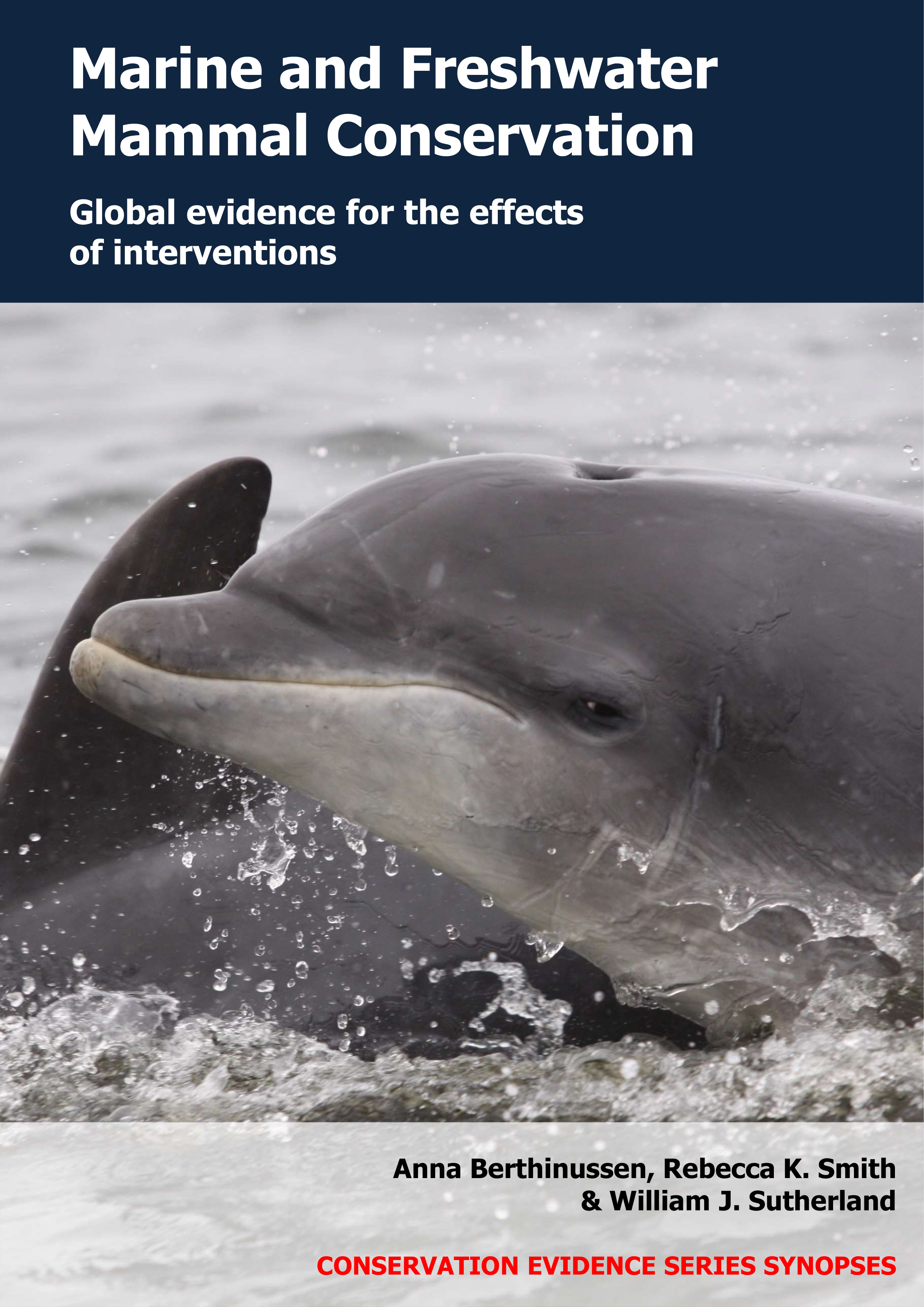Set and enforce vessel speed limits
-
Overall effectiveness category Likely to be beneficial
-
Number of studies: 2
View assessment score
Hide assessment score
How is the evidence assessed?
-
Effectiveness
80% -
Certainty
60% -
Harms
0%
Study locations
Supporting evidence from individual studies
A before-and-after study in 1986–2005 at a creek and canal in the Indian River estuarine system, USA (Laist & Shaw 2006) reported that after setting vessel speed limits in ‘zones’, a similar number of Florida manatee Trichechus manatus latirostris deaths were recorded to before the speed limits, but setting and enforcing speed limits throughout all areas resulted in fewer manatee deaths. Results are not based on assessments of statistical significance. Average numbers of manatees killed by vessels were similar before (1.8 manatees/year) and after (1.8–2.1 manatees/year) vessel speed limits were introduced to specific zones. Fewer manatees were killed by vessels (average 0.3 manatees/year) after speed limits were introduced and enforced by patrols in all areas. Year-round speed limits (8–11 km/h) were set within specific zones in 1990 and 1994, although low compliance was reported (see original paper for details). In 2002, the creek and canal were designated as manatee refuges and year-round speed limits (8–11 km/h) were set throughout. Patrolling enforcement officers issued warnings and speeding tickets in 2002–2005. Manatees killed by vessels were recorded within the creek, canal and adjacent waters during five years before speed limits were set (1986–1990), 13 years after speed limits were set in zones (1990–2002) and four years after speed limits were set and enforced in all areas (2002–2005).
Study and other actions testedA before-and-after study in 1990–2013 of 10 coastal areas in the North Atlantic Ocean, USA (Laist et al. 2014) found that after setting vessel speed limits, fewer North Atlantic right whale Eubalaena glacialis deaths caused by vessel collisions were recorded than before speed limits were set. The total number of right whale deaths in the 10 areas caused by vessel collisions was lower during five years after speed limits were put in place (0 deaths) than during 18 years before (total 13 deaths). In December 2008, mandatory speed limits (≤18.5 km/h for vessels ≥19.8 m long) were put in place in 10 areas with key habitats for North Atlantic right whales (migration routes, feeding areas, calving grounds) during periods of peak whale occurrence. Numbers of whale deaths caused by vessel collisions inside (or within 83 km from) the 10 areas during 18 years before (1990–2008) and five years after (2009–2013) speed limits were set were extracted from national databases.
Study and other actions tested
Where has this evidence come from?
List of journals searched by synopsis
All the journals searched for all synopses
This Action forms part of the Action Synopsis:
Marine and Freshwater Mammal Conservation
Marine and Freshwater Mammal Conservation - Published 2021
Marine and Freshwater Mammal Synopsis





)_2023.JPG)














